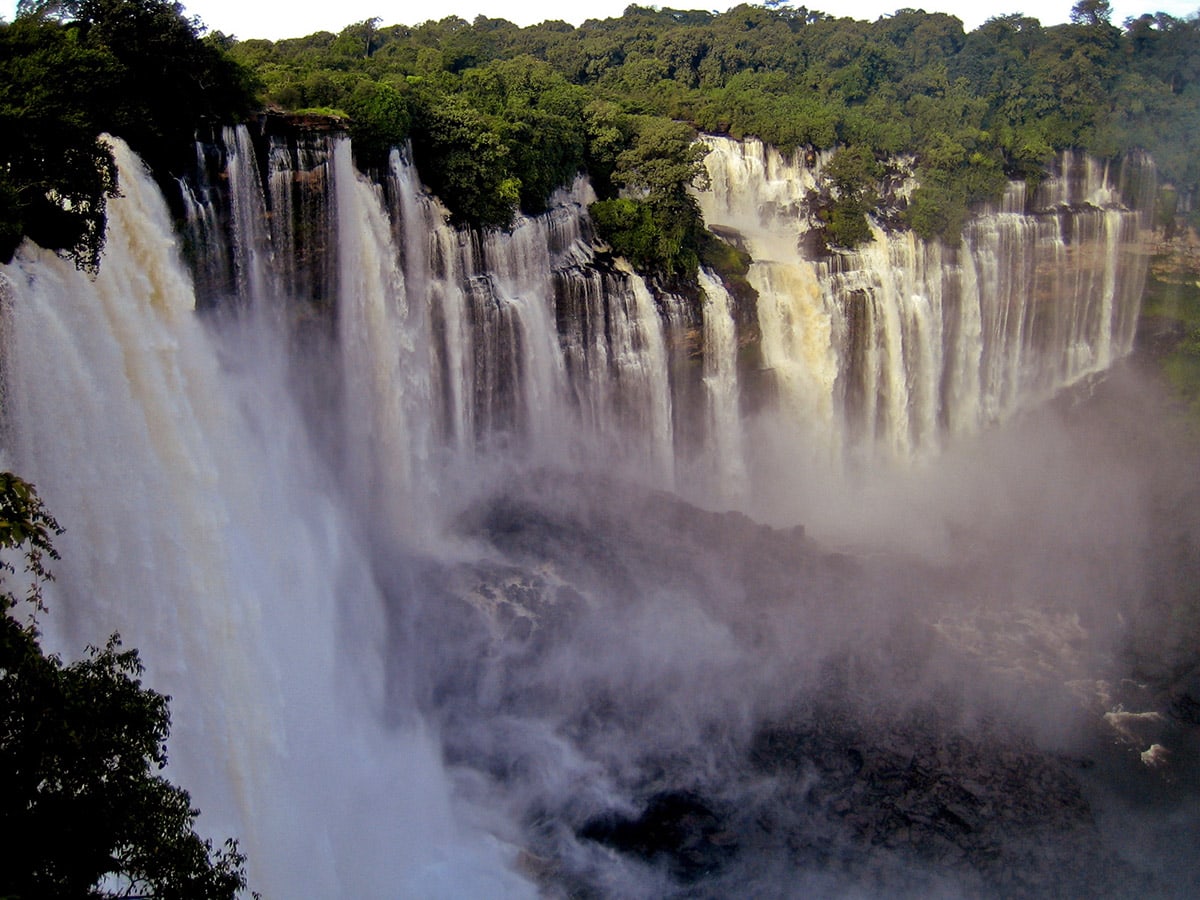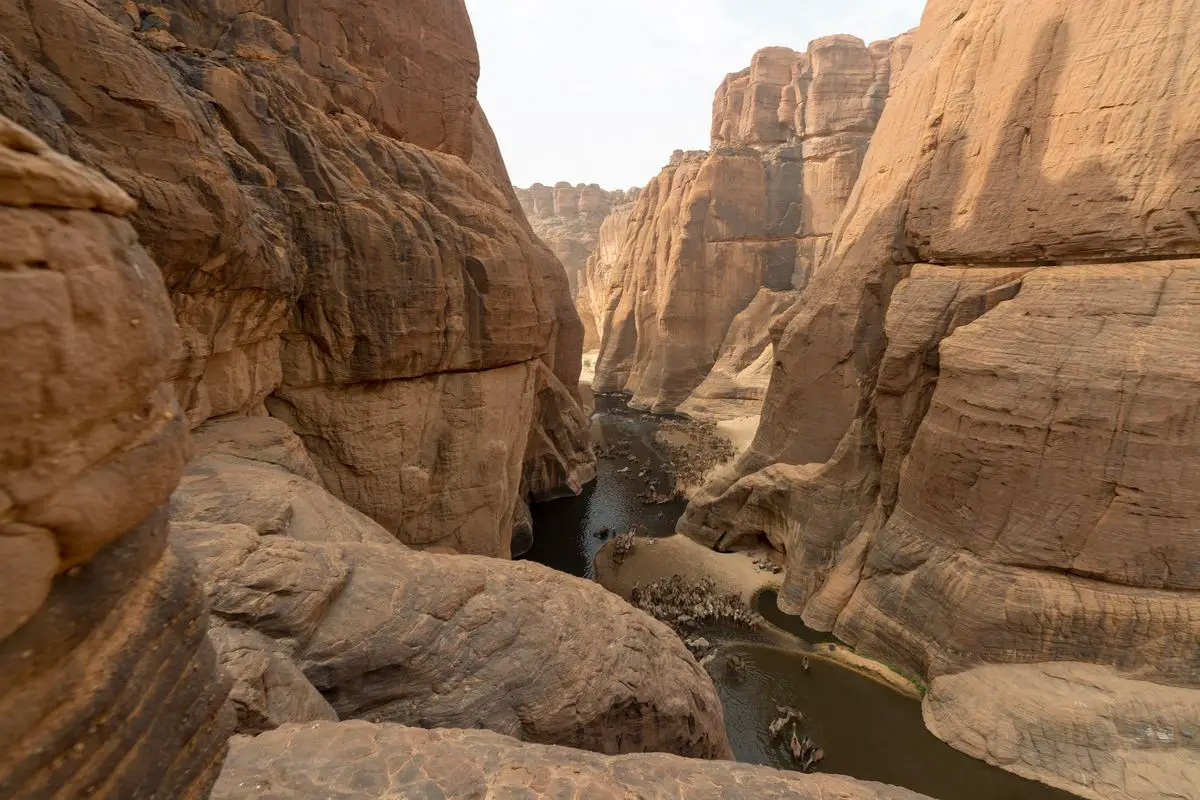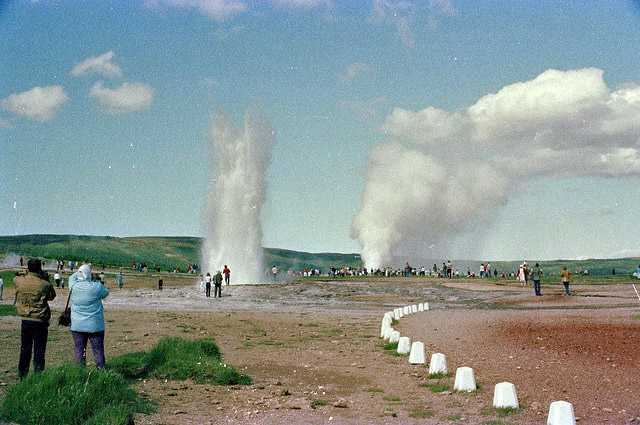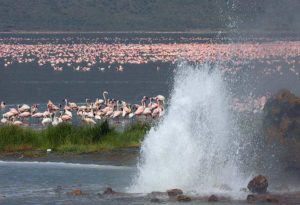Geothermal fields 🢔 Geothermal features 🢔 Geological wonders 🢔 Categories of wonders
Wonder
Soborom geothermal field and Yerike hot spring
 In short
In short
The most interesting geothermal features of Sahara are seen in Soborom geothermal field. Here are located steam jets, boiling mud pots, solfataras and there are rumours about geysers here.
 40.8%
40.8%
GPS coordinates
Map of the site
If you see this after your page is loaded completely, leafletJS files are missing.
 In detail
In detail
Tibesti
Tibesti mountains are the largest mountains in the central part of Sahara. These mountains contain numerous interesting natural and historical landmarks – but most are little investigated due to the nearly constant warfare in this region.
Magnificent are the volcanoes of Tibesti, rising up to 3.4 km high and having giant, up to 800 m deep calderas.
These volcanoes are dormant – there are no active eruptions ongoing but the volcanic heat is not gone as is indicated by several groups of hot springs in the mountains.
Water that heals
The largest and most impressive manifestation of volcanic heat in Tibesti is the Soborom geothermal field which is located close to the northwestern rim of Tarso Voôn volcano.
Few foreigners have visited this remote geological landmark – but local people know it very well. These springs are considered to have healing powers – the word Soborom means "water which heals".
Local Toubou people and other people from this part of Sahara come and stay for a few days in the natural resort to heal dermatitis or rheumatism. For the healing has been selected a less hot pool, where water is some 42°C warm. People have made some simple utilities – there are placed flat stones in the pools which serve as headrests. Earlier beside the springs, the visitors hung their weapons in order to protect themselves in case of sudden attack.
Yerike and coloured soil
The hottest spring pool is named Yerike – gas constantly is rising from it and the pool is bubbling as if boiling.
The temperature of springs in Soborom is between 22 and 88°C. Here is emanating also sulfur and iron, both have colored the soil in vivid colors.
The reports about Soborom are somewhat contradicting. It is known that here are located hot springs, a boiling stream, boiling mud pots, solfataras, there are many spatter cones. Some reports though mention also geysers. But as there are no more detailed descriptions of this rare natural phenomenon, it is possible that there are no true geysers and word "geyser" just describes the fervent bubbling of Yerike spring.
References
- Gustav Nachtigal. Sahara und Sudan, 1879, Leipzig, F.A.Brockhaus
Soborom geothermal field and Yerike hot spring are included in the following article:
 Linked articles
Linked articles

Wonders of Africa
Africa has many outstanding wonders and some of the most surprising ones are the heritage of Egyptian civilization, the vernacular architecture of the Sahel region, tropical ecosystems, and others.

Wonders of Chad
The landmarks of Chad are little known – most visitors are deterred by the prolonged warfare in this country. The country though has very interesting landmarks. Among the most interesting monuments of Chad are prehistoric cliff art and fantastic geomorphological features.

Geysers
Hasty hydrogeologists would say: geysers are thermodynamically and hydrodynamically unstable hot springs. “Normal” people would say – geysers are hot springs that at more or less regular intervals shoot up a fountain of boiling water and steam. Sometimes these fountains are even 100 m tall… or even 450 m!
 Recommended books
Recommended books
Sahara: An Immense Ocean of Sand
The Sahara Desert is not just a wasteland of sand and sun, but a teeming wilderness. Sahara: An Immense Ocean of Sand tells the story of the world’s largest desert, documenting the culture, history, environment, people, and animals of this massive region. 500 bold, full-color photographs and illustrations, including startling photographs from space and candid shots of indigenous peoples, help tell the story of this expansive territory.
Geology of North Africa
A reference volume on the geology of North Africa, this volume deals with Egypt, Libya, Algeria, Tunisia, and Morocco. In great detail, the geology, tectonic elements, the geology of the Pan-African Shield, the Phanerozoic geological evolution, and most of the lithostratigraphic units of the five countries are described.



